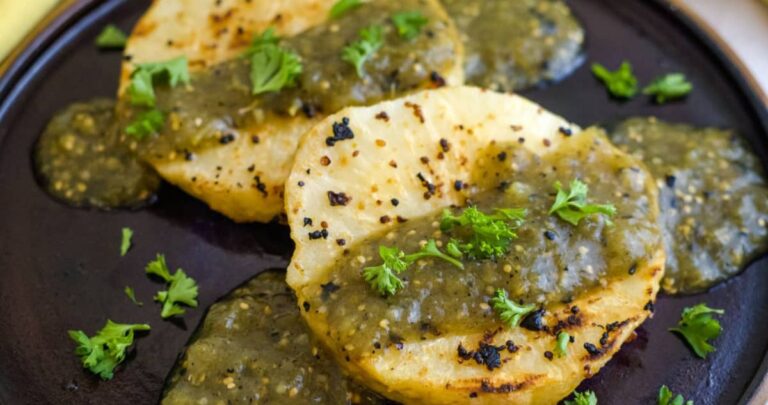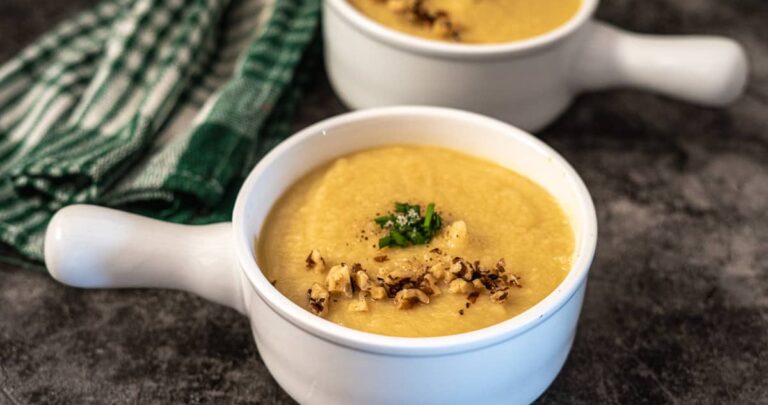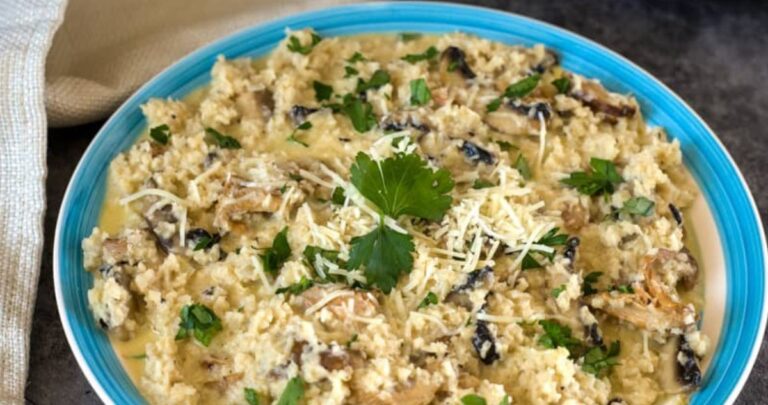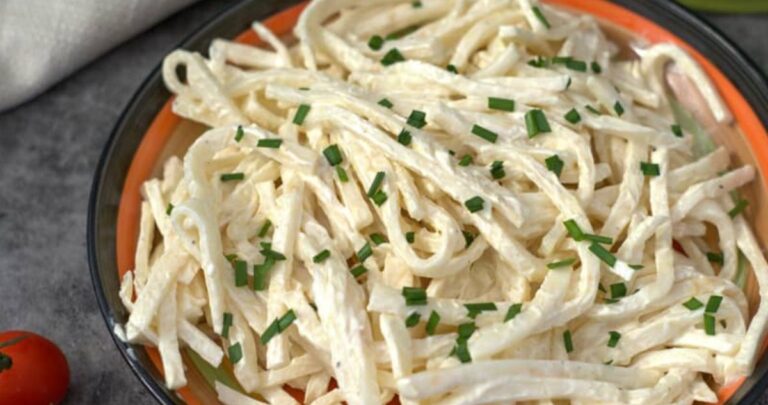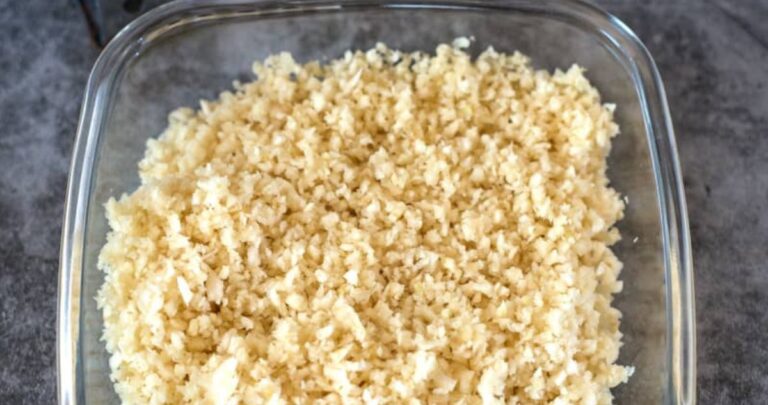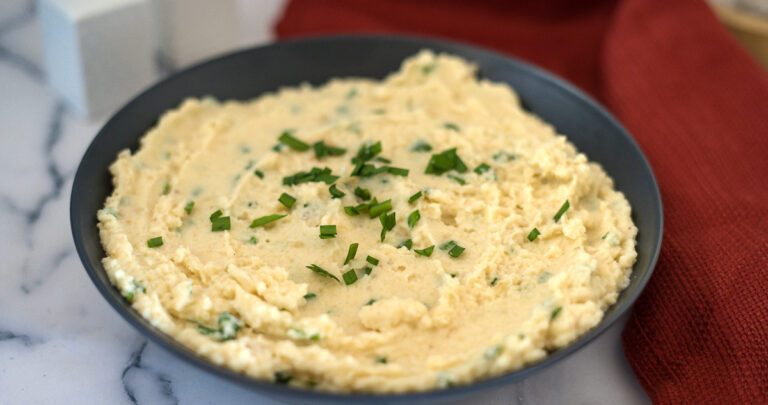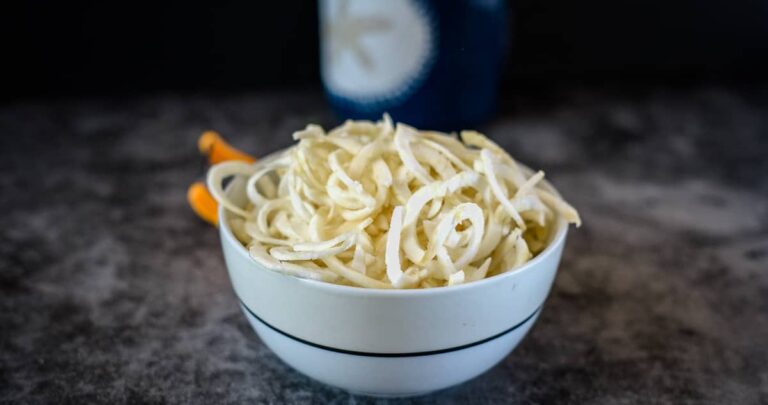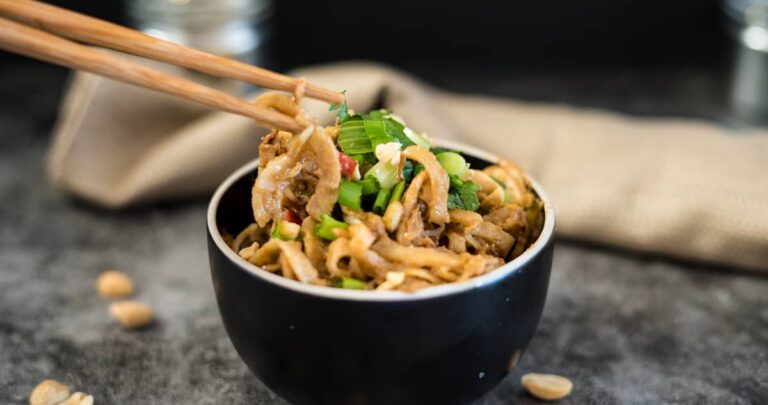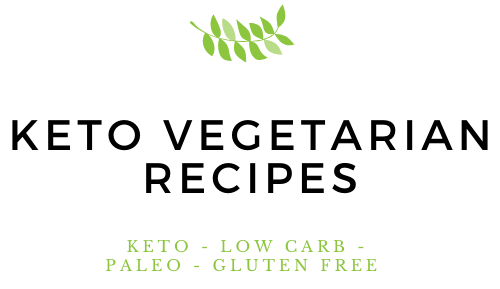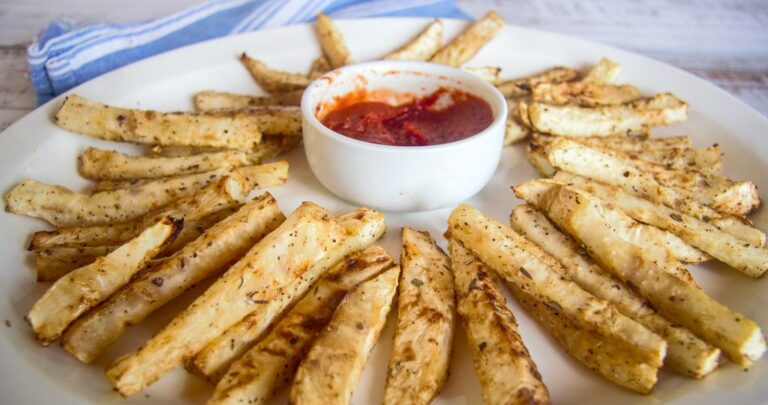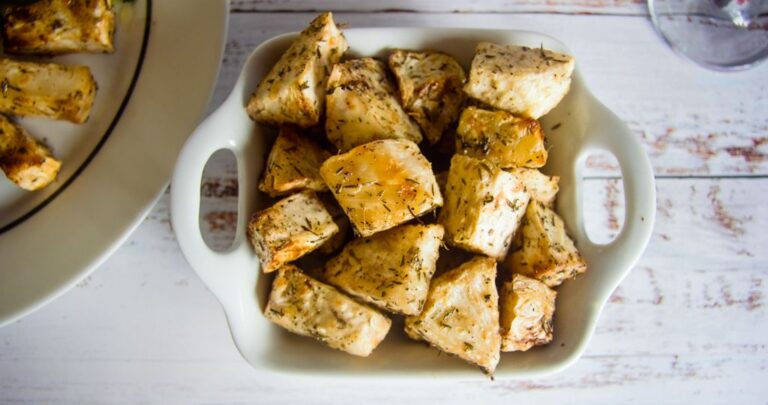Keto celeriac recipes are a fantastic way to enjoy the rich flavors and versatility of this low-carb root vegetable while staying within the guidelines of a ketogenic diet. Celeriac, also known as celery root, is an excellent choice for those looking to reduce carbohydrate intake while still relishing delicious, hearty meals.
Jump to:
What is celeriac?
Celeriac, also known as celery root, is a type of root vegetable that is closely related to celery. However, unlike celery, which is grown for its crisp stalks and leaves, celeriac is cultivated for its bulbous, knobby root. This root vegetable is known for its distinct appearance and flavor.
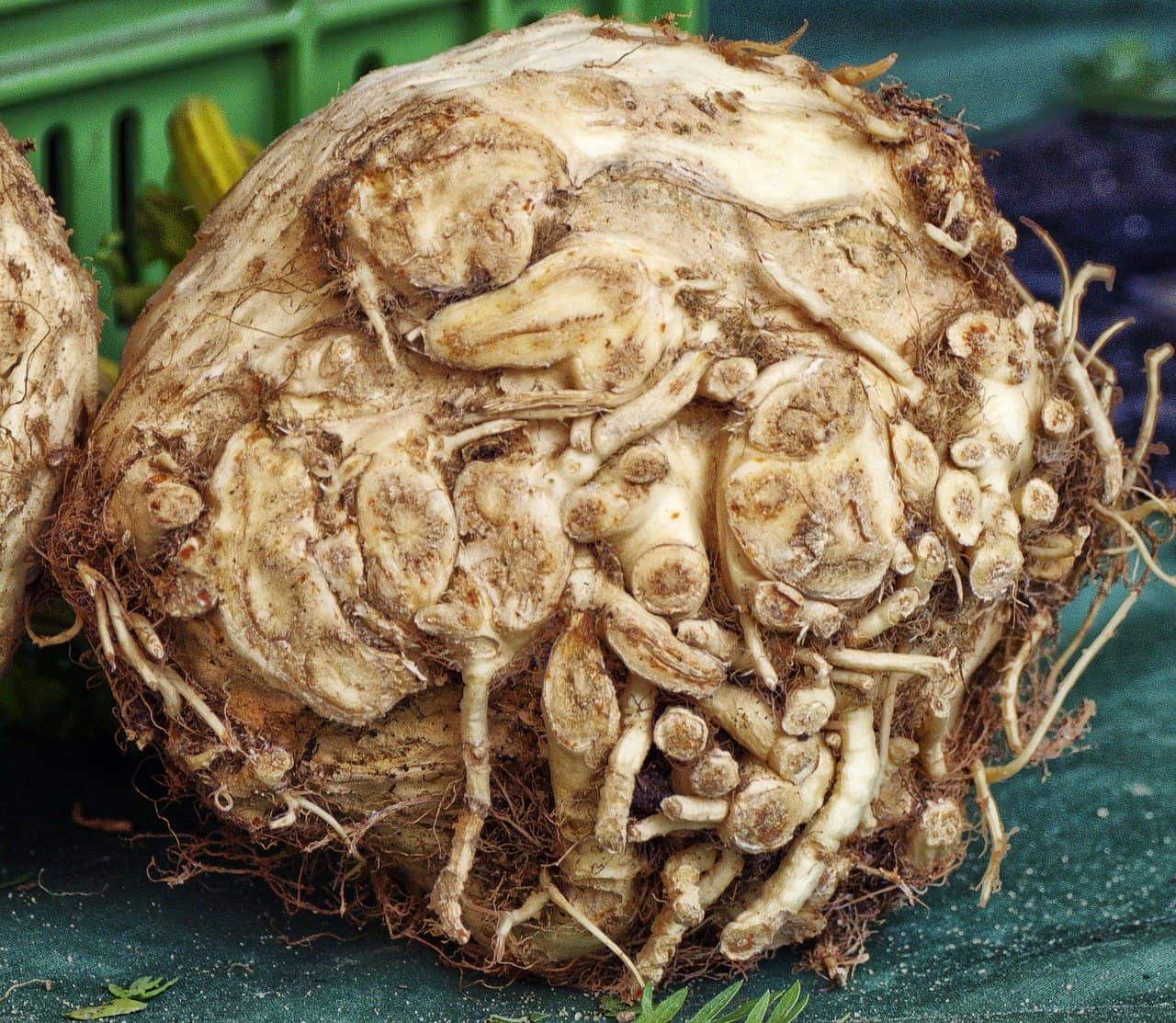
Here are some key characteristics of celeriac:
- Appearance: Celeriac has a round, irregularly-shaped root that is covered in rough, gnarly skin. The skin is brown or beige and can have some small rootlets protruding from it. The interior flesh is creamy white.
- Flavor: Celeriac has a mild, slightly nutty and earthy flavor, with hints of celery and parsley. It is less strong and stringy than traditional celery stalks.
- Uses: Celeriac is a versatile vegetable that can be used in a variety of culinary applications. It is often used in soups, stews and salads. It can be mashed or pureed, similar to mashed potatoes, and used as a lower-carb alternative. Some people also enjoy it raw, thinly sliced or grated, in salads or slaws.
- Nutrition: Celeriac is a nutritious vegetable. It is a good source of dietary fiber, vitamins (such as vitamin C, vitamin K, and vitamin B6), and minerals (such as potassium and phosphorus).
Celeriac is a versatile ingredient in the kitchen and can be a valuable addition to various dishes, providing a unique flavor and texture profile. It's important to peel celeriac before using it, as the outer skin is too tough to eat. Once peeled and prepared, it can be cooked in numerous ways to suit your taste and dietary preferences.
Is celeriac keto-friendly?
Celeriac can be considered keto-friendly as it is relatively low in carbohydrates compared to other root vegetables.
Here's a rough idea of the macronutrient content in 100 grams of raw celeriac:
Carbohydrates: Approximately 9 grams (of which about 2 grams are fiber).
Fat: Less than 0.5 grams.
Protein: About 1 gram.
The carbohydrate content in celeriac is relatively low, especially when you consider the fiber content, which can help with digestion and may have a minimal impact on blood sugar levels.
However, keep in mind that the way you prepare and cook celeriac can affect its overall carbohydrate content. For instance, frying or adding high-carb sauces can increase the carb count.

What does celeriac taste like?
Celeriac has a distinctive flavor that is often described as a mild, nutty and earthy combination with subtle hints of celery and parsley. The taste of celeriac is somewhat similar to celery, but it is milder and less stringy.
When eaten raw, celeriac has a crisp and crunchy texture and its flavor is more pronounced. It is often used in salads or slaws, where it can add a refreshing, slightly peppery note.
When cooked, celeriac's flavor becomes sweeter and more mellow. It can absorb the flavors of the seasonings and ingredients it is cooked with, making it a versatile and complementary addition to a wide range of dishes. It's often used in soups, stews, gratins and mashed as a lower-carb alternative to potatoes.

How to prepare celeriac
Preparing celeriac (celery root) is relatively straightforward, and it can be used in a variety of dishes once properly cleaned and peeled.
- Wash the Celeriac: Begin by rinsing the celeriac under cold running water to remove any dirt or debris from the outer skin.
- Trim the Tops and Bottom: Place the celeriac on a cutting board. Using a sharp knife, trim off the leafy tops and the bottom root end of the celeriac. This will leave you with a more manageable, somewhat flat surface.
- Peel the Celeriac: Use a vegetable peeler to remove the tough outer skin of the celeriac. Make sure to peel away all the knobby parts and get down to the creamy white flesh underneath. Be thorough but careful not to remove too much of the flesh.
- Cut as Needed: Once the celeriac is peeled, you can cut it into the desired shape or size for your recipe. You can slice it, dice it, or cut it into strips, depending on your intended use. Remember that celeriac oxidizes and may darken when exposed to air, so if you're not using it immediately, you can keep it in a bowl of cold water with a bit of lemon juice to prevent browning.
- Cook or Use in Recipes: Now that your celeriac is prepared, you can use it in various recipes. It can be roasted, boiled, mashed, sautéed, or added to soups and salads.

15 Low Carb Celeriac Recipes
These 15 keto celeriac recipes offer a wide range of options to satisfy your cravings while staying in line with your ketogenic dietary goals. Whether you're in the mood for a comforting side dish, a flavorful main course, or a nutritious salad, celeriac can be a versatile and tasty addition to your keto repertoire.
